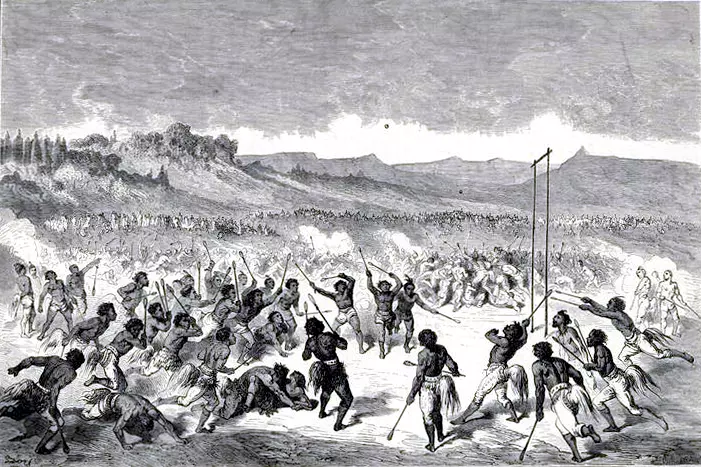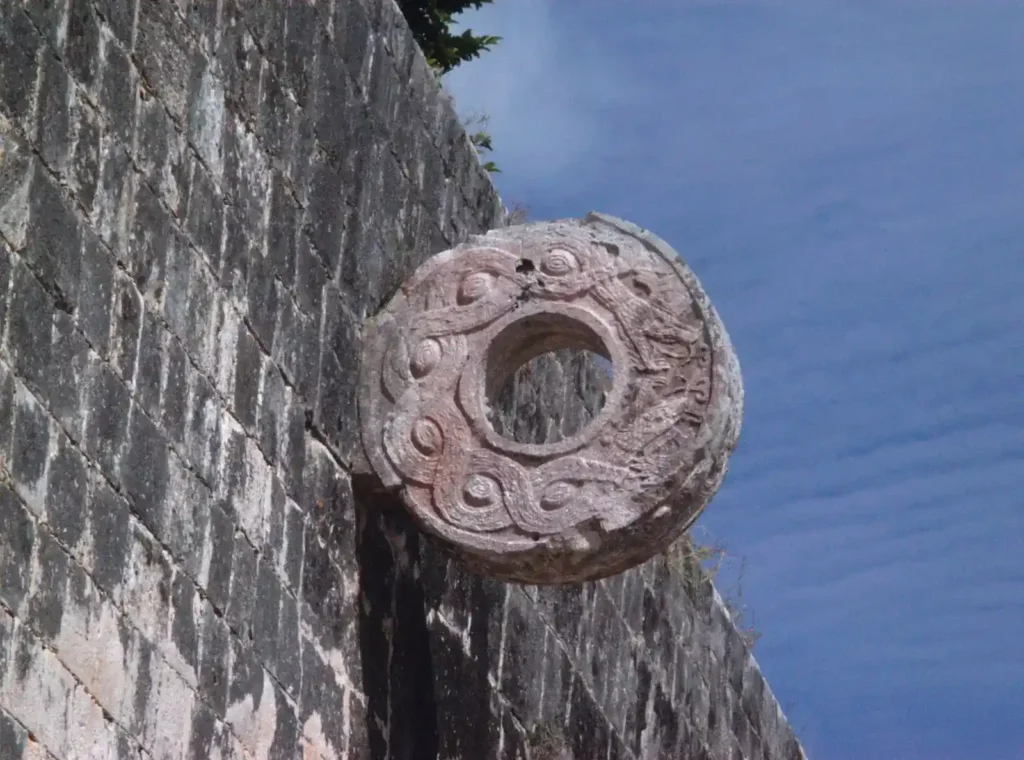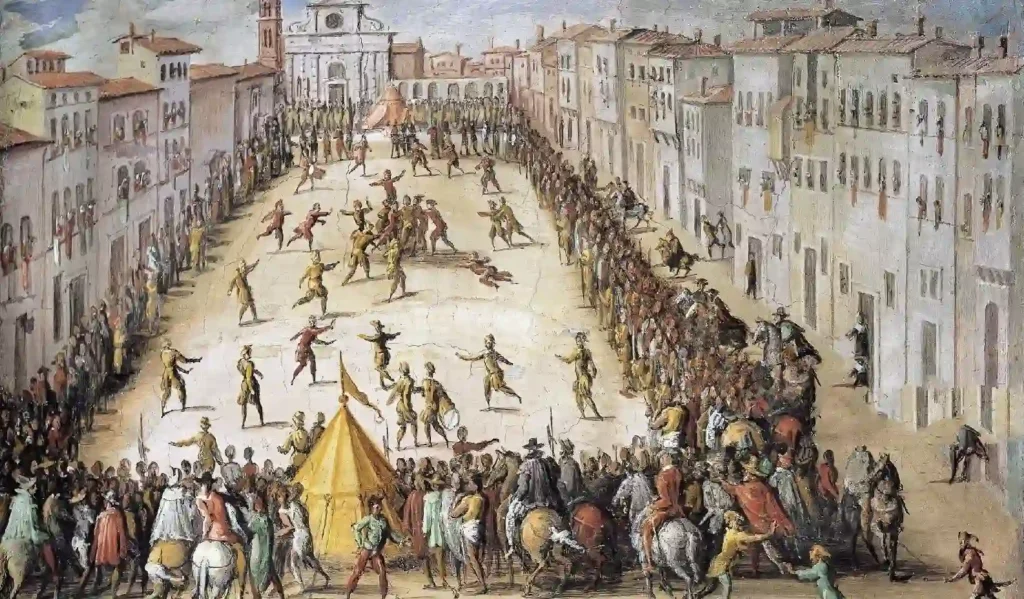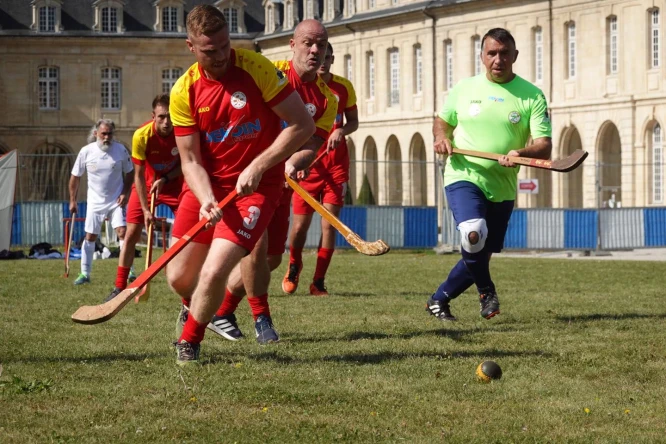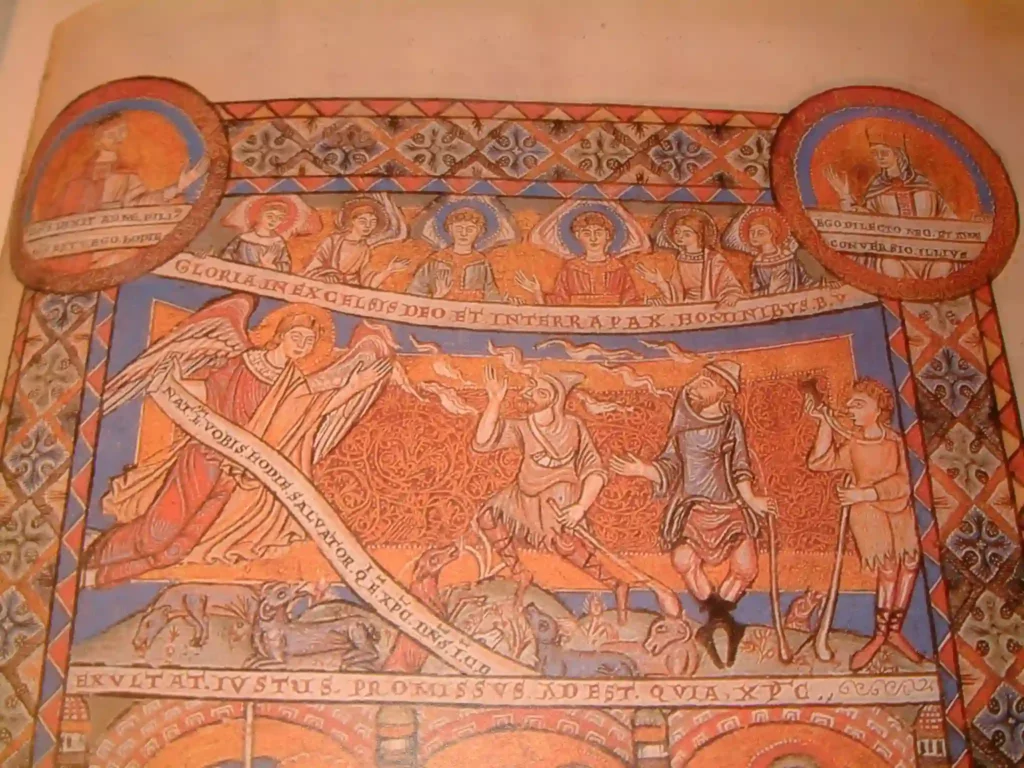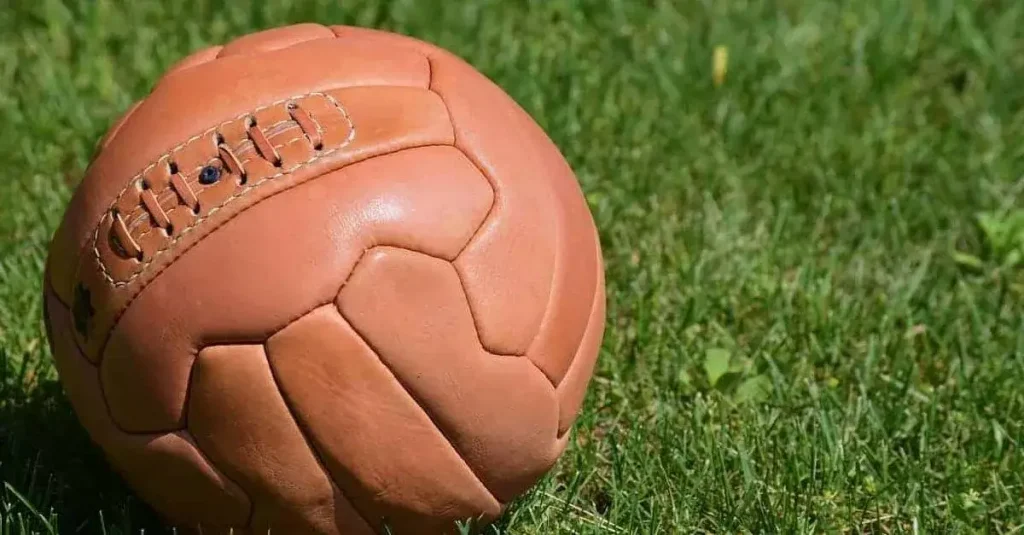Soccer, also known as football, is a popular sport played by millions of people worldwide. However, the origin of soccer can be traced back to ancient civilizations, where similar games were played using a ball and some form of goal. This article reviews five old games played before modern soccer was introduced.
The American Indians And Pasuckuakohowog
From approximately 1620, Native American Indians played Pasuckaukohowog. However, there is a high probability that they were playing football earlier. ‘Pasuckuakohowog’ literally means ‘football with feet.’
It was an incredibly violent and unpleasant game. Broken bones and other serious injuries were quite common among players. Up to 500 players were involved in the game, which was almost like a war.
Players often disguised themselves with war paint and ornaments to avoid retribution after the game. Goals were usually placed at either end of a pitch that was sometimes a mile long. The game could last for hours and often lasted for days. A celebratory feast would follow the match between the two teams.
The Eskimos And Aqsaqtuk
Aqsaqtuk, which means soccer on ice, is an Inuit style of football that has existed for unknown periods. For hundreds of years, the Inuit have mentioned the game in myths and legends. According to Inuit belief, the dead play an eternal game of football using the head of a walrus as the ball under the northern lights!
Aqsaqtuk is played between two teams (varying in size), with each team facing the other at kickoff. All players rush to kick the ball into their opponent’s goal after the ball crosses one line of players.
Several legends tell of games where the goal distance was 10 miles between two villages! Whale bones and animal hides are used to make footballs. There are wood shavings, feathers, moss, and hair in the stuffing.
Each team was usually named after a bird. Typically, it was ptarmigans (an arctic bird similar to a grouse) versus long-tails. In summer, the long-tails and ptarmigans played a game, with the long-tails playing towards the water and the ptarmigans playing towards land, their preferred habitat.
A song battle would also occur between the two teams, each trying to outdo the other. An igloo called a qaggi was constructed after the game to celebrate.
The Aztecs And Tlachtli
The Aztecs and other ancient Mesoamerican cultures played Tlachtli. It was a popular pastime enjoyed by both commoners and the elite. The game was played on a large rectangular court called a tlachtli, surrounded by walls or barriers.
The ball, made of solid rubber, was struck with the hips, buttocks, or elbows, and players were not allowed to use their hands or feet to touch it.
The game of Tlachtli had religious and ceremonial significance for the Aztecs. It was believed to be a gift from the gods, and the game was often played to honor them. The game was also used as a human sacrifice, with the losing team often sacrificed to the gods.
Despite its importance in Aztec culture, Tlachtli was banned by the Spanish conquistadors when they arrived in Mexico in the 16th century. The game was seen as barbaric and pagan, and the conquistadors sought to suppress it as part of their efforts to spread Christianity in the region.
Today, Tlachtli is no longer played as a competitive sport, but it has been resurrected in a ceremonial form in some indigenous communities in Mexico. It is also sometimes played as a recreational activity by people interested in the ancient Aztec culture.
Despite its violent past, Tlachtli remains an integral part of the cultural heritage of the Aztecs and is a testament to the rich and complex civilization that they built.
The Italians And Calcio
Calcio was a popular sport in Italy back in the day. It has a long and storied history in Italy, with the first recorded match taking place in Genoa in 1533. However, the roots of Calcio can be found in the Roman game of Harpastum.
Calcio is played by two teams of eleven players on a rectangular field. The game’s goal is to score more goals than the opposing team. The team that scores the most goals wins the match.
Calcio has also significantly impacted Italian culture, with the sport closely tied to the country’s national identity. As a result, it is a source of pride for many Italians and a popular pastime for people of all ages. It has a rich history and a passionate fan base, and its success on the international stage has made it a source of pride for the country.
Similar to rugby, Calcio used to be a much more violent game than it is today. On special occasions, it was played by strong young men, especially aristocrats.
It was a game involving 27 players who could use their hands and feet to play the ball. Major cities usually held games in their piazzas (city squares). The ball was thrown over a designated spot at the opposing end of the field to score goals. The ball must always move in Calcio. In case of a stoppage of play, the ball is restarted.
The most famous game of Calcio was played in Florence in Piazza Santa Croce on 17th February 1530. It was during this time that the Medici were sieging Florence.
To show contempt for the invading army and to maintain the tradition of playing during the February carnival, the people of Florence did not back down from the siege. On the contrary, the game was even enlivened by musicians playing on the rooftops.
There was no record of the result, perhaps because the game was about Florence showing unity against the Medici.
The French And Choule
Choule, also known as Soule, is a traditional ball game played in the Brittany region of France. It is a fast-paced and physically demanding sport that has been played for centuries and is deeply embedded in the region’s cultural identity.
The Romans introduced Harpastum into France around 50 BCE. The French took the game and developed their version called ‘Choule’ or ‘Soule. The nobility called the game ‘La Soule’, and ordinary people called it ‘La Choule’. Earliest reports of the game date back to the 12th century.
The game of Choule is played on a large field, with two teams of players trying to score goals by hitting a small ball with their feet or a long stick. The ball, called a choule, is made of wood or leather and is struck with great force, often reaching speeds of up to 80 kilometers per hour.
Choule is a rough and physical game, with players tackling and bumping into each other as they try to gain control of the ball. As a result, the game can be quite dangerous, with players often suffering injuries such as broken bones and bruises.
Despite the risks, Choule is a popular and beloved pastime in Brittany, with many local communities hosting regular matches and tournaments. The game is also an essential part of the region’s cultural heritage, with traditional Choule matches often featuring traditional music, dance, and food.
The game was played on Sundays until sunset and the pitch varied in length. For example, it could be the length of two streets or the distance between two towns. The game began when the ball was thrown high to represent the sun (La Soule roughly translates to the sun).
The aim of the game was to take the ball for the length of the field and score a goal. The goal could be a tree, a wall, or even a stream. The ball was quite heavy and made with stitched leather skin. It was stuffed with more leather and bran.
Soule or Choule was often competed between two entire villages, with hundreds of people playing the game together. It was a violent game. Biting, scratching, and punching was quite commonplace.
Due to the game’s violent nature, King Felipe V banned it in 1319. King Carlos V again prohibited the game in 1388, although this did not stop the game from being played in France.
Final Words
The origin of soccer can be traced back to ancient civilizations, but the modern version of the sport has its roots in England in the 19th century. Overall, soccer has a rich and fascinating history, and it continues to be a beloved and highly competitive sport enjoyed by people of all ages.

